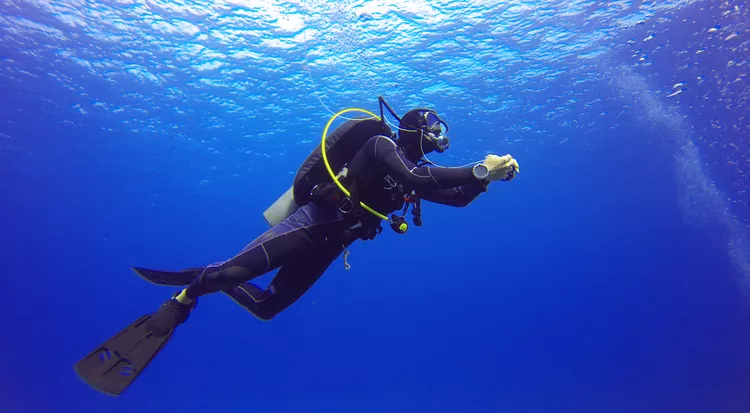Article Summary
Understanding Buoyancy Forces
An object is more buoyant in salt water than it is in fresh water, but why is that? An object’s buoyancy is determined by two main forces:
- The downward force: equal to the weight of the object
- The upward force: equal to the weight of the water that the object displaces (this is known as Archimedes’ Principle)
The upward and downward forces work in opposition to each other. Consequently, the object will either float, sink, or remain suspended in the water. The object’s buoyancy can be categorized in one of three ways:
- Negatively Buoyant: The weight of the object is greater than the weight of the water it displaces, causing it to sink.
- Positively Buoyant: The weight of the object is less than the weight of the water it displaces, enabling it to float.
- Neutrally Buoyant: The weight of the object is exactly equal to the weight of the water it displaces, allowing it to remain suspended in mid-water.
Weight Comparison: Salt Water vs. Fresh Water
A cubic foot of salt water weighs approximately 64.1 lbs, whereas a cubic foot of fresh water weighs only 62.4 lbs. The reason for this difference in weight is the presence of salt dissolved in the water.
Dissolving salt increases the water’s density, which is defined as mass per unit of volume. When salt is added, it reacts with water molecules, creating a polar bond that rearranges these molecules. Notably, a cubic inch of salt added to water does not increase the water’s volume by a cubic inch. This is mainly because the water molecules compact around the salt molecules, resulting in a total volume increase of less than one cubic inch.
Given this, a cubic foot of salt water contains more molecules than a cubic foot of fresh water, thus weighing more.
According to Archimedes’ Principle, the upward force on a submerged object equals the weight of the water it displaces. Since salt water is heavier than fresh water, it exerts greater upward force, affecting buoyancy. An object that displaces a cubic foot of fresh water will experience an upward force of 62.4 lbs, whereas in salt water, it will experience an upward force of 64.1 lbs.
Changes in Buoyancy Between Water Types
Understanding how an object’s buoyancy changes when transitioning from fresh to salt water (and vice versa) helps in predicting its behavior:
- Neutrally buoyant objects: An object that is neutrally buoyant in fresh water will float in salt water due to increased upward force.
- Neutrally buoyant objects switch: An object that is neutrally buoyant in salt water will sink when placed in fresh water, as the upward force decreases.
- Negatively or positively buoyant objects: An object negatively buoyant in salt water will become even more negatively buoyant in fresh water, but whether it sinks or floats depends on additional weight information.
- Weight transition in divers: An object positively buoyant in fresh water will gain positive buoyancy in salt water, requiring specific weight adjustments.
Weight Adjustments for Scuba Divers
Divers will experience more positive buoyancy in salt water and therefore need to adjust their weights. The required weight can vary based on factors such as body mass, exposure protection, tank type, and dive equipment.
The weight belt is a small part of a diver’s total weight, which includes body weight and gear. As divers often change their gear based on dive locations, the upward force may fluctuate accordingly.
It becomes challenging to predict how much weight a diver needs without knowing precise water displacement and total weight. However, the best approach to determine appropriate weighting is to conduct a buoyancy test when switching water types or dive gear. If all other factors remain constant, divers may find themselves needing to nearly double their weight in salt water compared to fresh water.
Other Influencing Factors
It is crucial to remember that salinity levels in salt water differ globally. Therefore, divers will experience more positive buoyancy in saltier waters. For instance, average salt water weighs 64.1 lbs per cubic foot, but in areas like the Dead Sea, that weight can amount to about 77.3 lbs—significantly increasing buoyancy.
Additionally, temperature affects water density; colder water is denser than warm water. Water reaches its maximum density at around 39.2°F, meaning that divers may notice increased negative buoyancy in very cold waters.
Dive sites may also require transitioning through layers of varying water temperatures (thermoclines) or salinities (haloclines), impacting buoyancy. Predicting a diver’s exact buoyancy necessitates knowing the total weight (including gear) and the weight of the water they displace. Consequently, performing buoyancy checks before diving is much more efficient than trying to calculate necessary weights.





